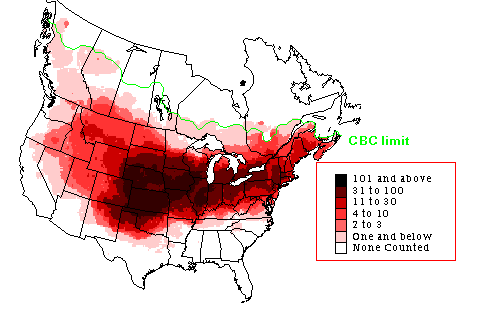About 250 miles south of Big Fork, here in the Chippewa River Valley, the front brought high winds and rain, but no floods and no tornadoes. The wind knocked down some trees and whipped the leaves around. And it brought the first Tree Sparrows I've seen this fall.
They were everywhere in the bushes along the Chippewa River State Trail today, hanging out with the chickadees and juncos.
 |
| American Tree Sparrow - Christmas Bird Count data |
Despite its name, this sparrow nests on the ground in the sub-arctic, a region that's not known for trees. They're attracted by the availability of insect protein up north - and in the winter, they switch over to seeds. Fill a plastic tray with white proso millet, and they'll come to your backyard to feed along with the juncos and White-throated Sparrows.
So how'd it get the "tree" moniker? European settlers called it a "tree" sparrow because it reminded them of their rusty orange-capped Eurasian Tree Sparrow.
Look for their white wing bars, the back stick pin in their chest and their yellow mandible.


No comments:
Post a Comment